More than Married- Women Abstract Expressionist Painters
-
- “More than Married” is an exhibition By Jordan Bonadio and Jacqualyn Lindo that displays the work of women abstract expressionist painters in the art world in a new and refreshing way. The paintings shown in this exhibition demonstrate an interesting use of color, space, movement and emotion. From looking at the works of artists such as Frankenthaler, Hartigan, Krasner, and Mitchell, we are able to better understand the ways in which these women perceived the world and abstract expressionism. Each of the works brings something different to the exhibition – from the use of pastel colors in Frankenthaler’s work to the dramatic use of movement in Krasner’s “Noon.”
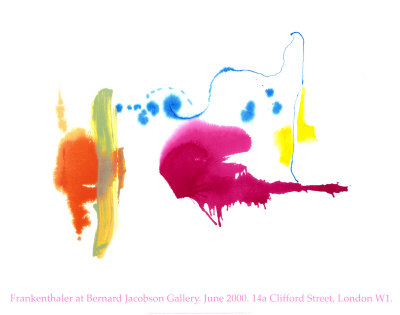
"Untitled" By Helen Frankenthaler 1995
- “More than Married” is an exhibition By Jordan Bonadio and Jacqualyn Lindo that displays the work of women abstract expressionist painters in the art world in a new and refreshing way. The paintings shown in this exhibition demonstrate an interesting use of color, space, movement and emotion. From looking at the works of artists such as Frankenthaler, Hartigan, Krasner, and Mitchell, we are able to better understand the ways in which these women perceived the world and abstract expressionism. Each of the works brings something different to the exhibition – from the use of pastel colors in Frankenthaler’s work to the dramatic use of movement in Krasner’s “Noon.”
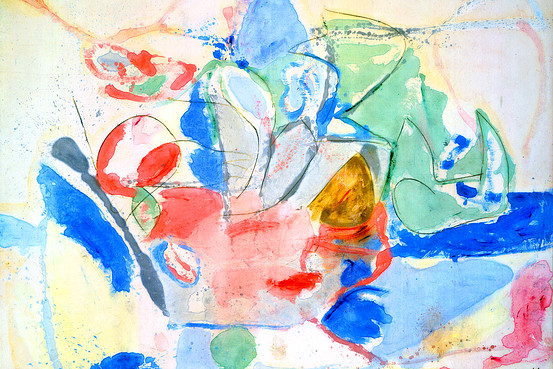
"Mountains and Sea" Helen Frankenthaler 1952
“Helen Frankenthaler’s career was launched in 1952 with the exhibition of Mountains and Sea. This painting is large – measuring seven feet by ten feet – and has the effect of a watercolor, though it is painted in oils. In it, she introduced the technique of painting directly onto an unprepared canvas so that the material absorbs the colors.” (wikipedia)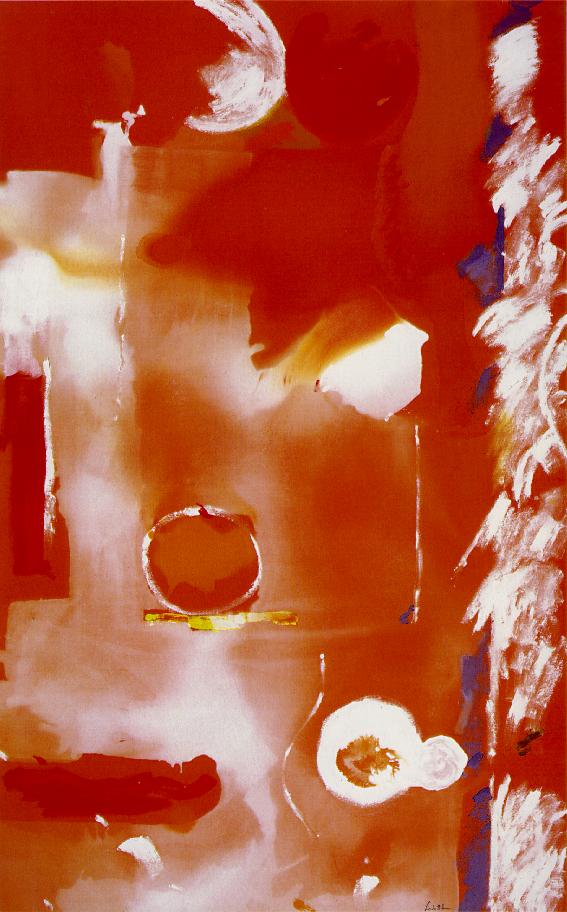
- “Seeing the Moon on a Hot Summer Day” Helen Frankenthaler 1987
“Krasner struggled with the public’s reception of her identity, both as a woman and as the wife of Pollock. Therefore she often signed her works with the genderless initials “L.K.” instead of her more recognizable full name.” (wikipedia)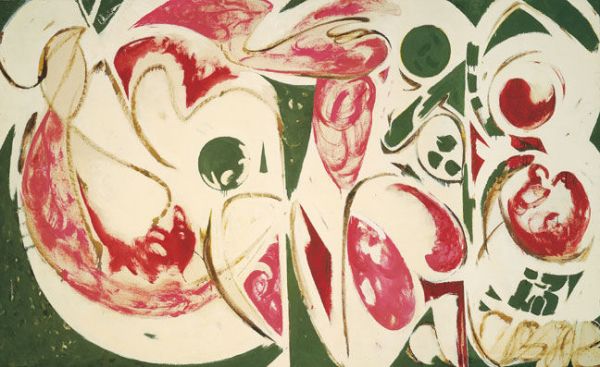
- “sun woman II” Lee Krasner 1957
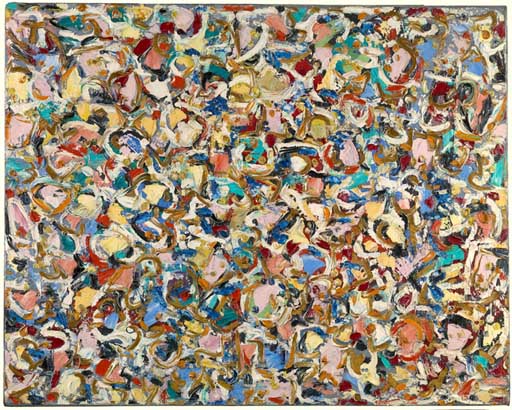
"Noon" Lee Krasner 1947
“Comrades in art, Pollock and Krasner fought a battle for legitimacy, impulsiveness and individual expression. They opposed an old-fashioned, conformist, and repressed culture unreceptive to these values” (wikipedia)
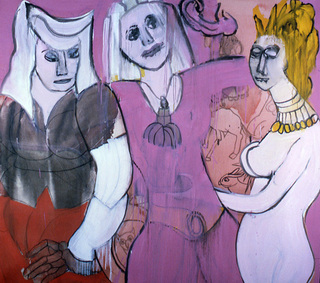
"New Painting" Grace Hartigan
“Grace Hartigan gained her reputation as part of the New York School of artists and painters that emerged in New York City during the 1940s and ’50s. She was a lively participant in the vibrant artistic and literary milieu of the times, and her friends included Jackson Pollock, Larry Rivers, Helen Frankenthaler, Willem and Elaine de Kooning,Frank O’Hara, and many other painters, artists, poets, and writers. She was the only woman artist in the Museum of Modern Art‘s legendary The New American Paintingexhibition which toured Europe in the late 1950s.” (wikipedia)

"Frank O'Hara" Grace Hartigan
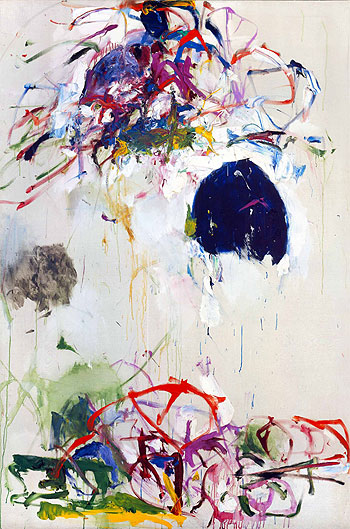
"Sunflowers” Joan Mitchell
“By the early 1950s, Joan Mitchell was regarded as a leading artist in the New York School. In her early years as a painter, she was influenced by Vincent Van Gogh, Paul Cézanne, Wassily Kandinsky, and later by the work of Franz Kline and Willem de Kooning, among others…Her paintings are expansive, often covering two separate panels. Landscape was the primary influence on her subject matter. She painted on unprimed canvas or white ground with gestural, sometimes violent brushwork. Her paintings are highly expressive and emotional…During the period between 1960 and 1964, Mitchell moved away from the all-over style and bright colors of her earlier compositions, instead using sombre hues and dense central masses of color to express something inchoate and primordial. The marks on these works are extraordinary: the paint flung and squeezed on to the canvases, spilling and spluttering across their surfaces and smeared on with the artist’s fingers. She said that she wanted her paintings “to convey the feeling of the dying sunflower.” (wikipedia)
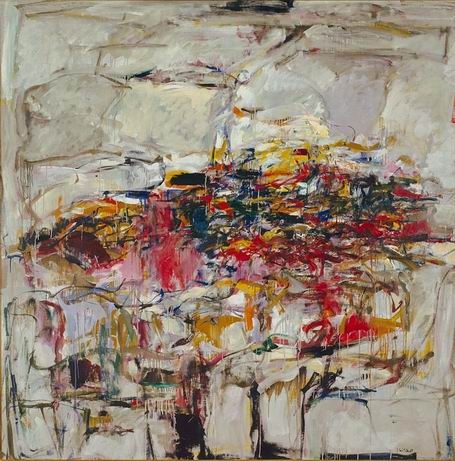
"City Landscape" John Mitchell Oil painting
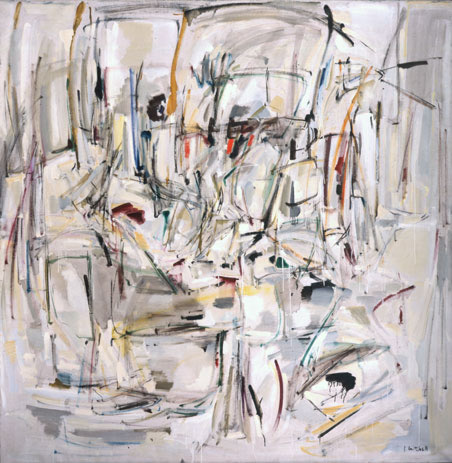
"No. 5" Joan Mitchell 1955 Oil on canvas 69" x 68"
“Abstract expressionism’s name is derived from the combination of the emotional intensity and self-denial of the German Expressionists with the anti-figurative aesthetic of the European abstract schools such as Futurism, the Bauhaus and Synthetic Cubism. Additionally, it has an image of being rebellious, anarchic, highly idiosyncratic and, some feel, nihilistic.” (wikipedia)


Trackbacks